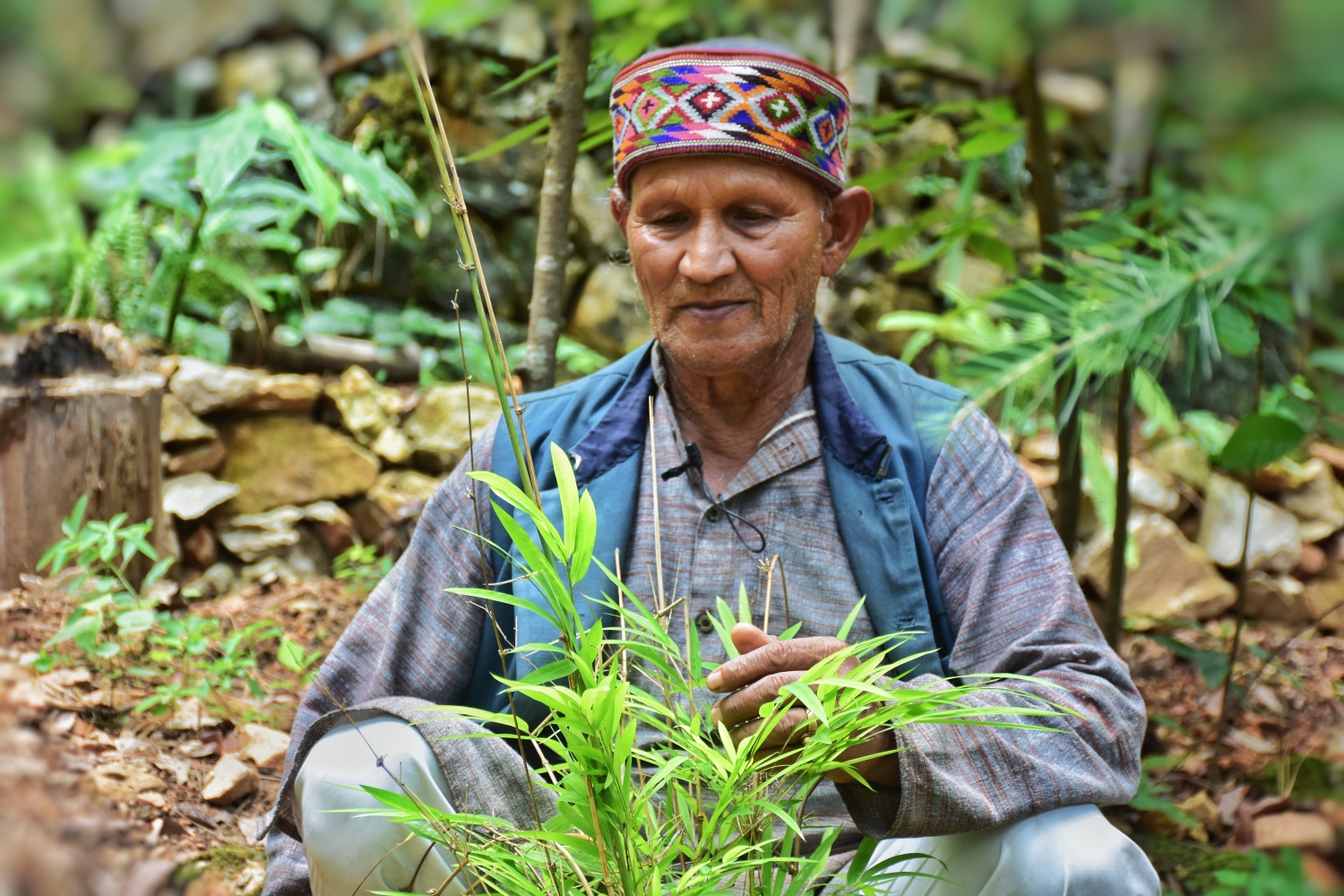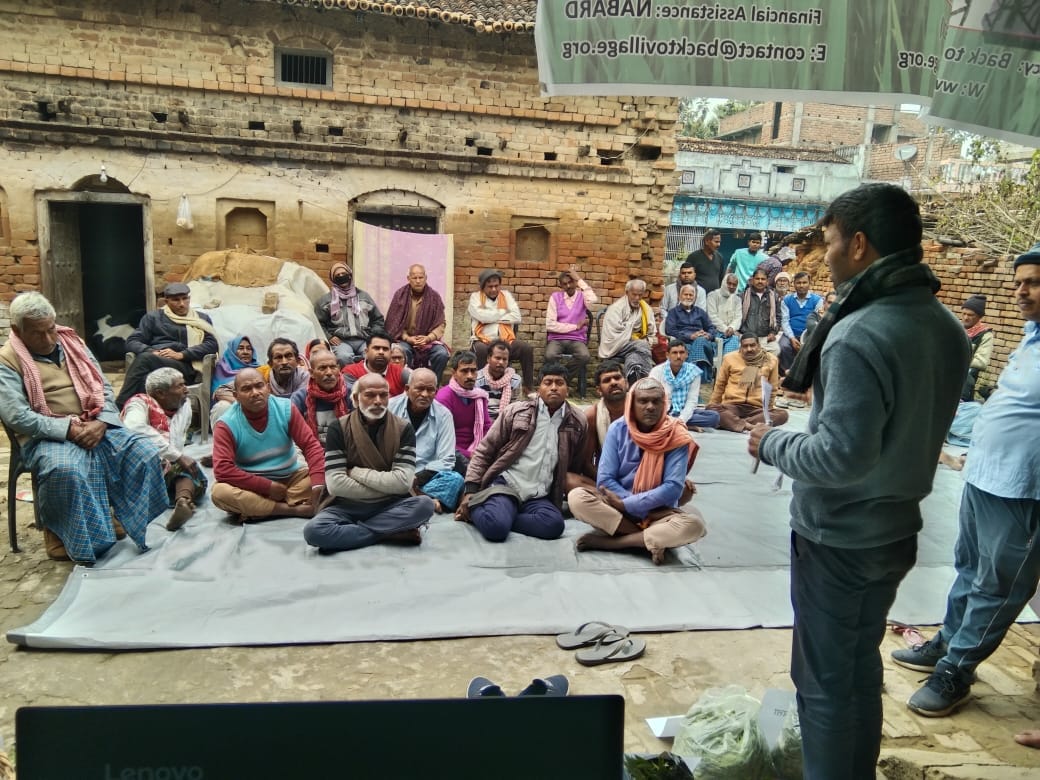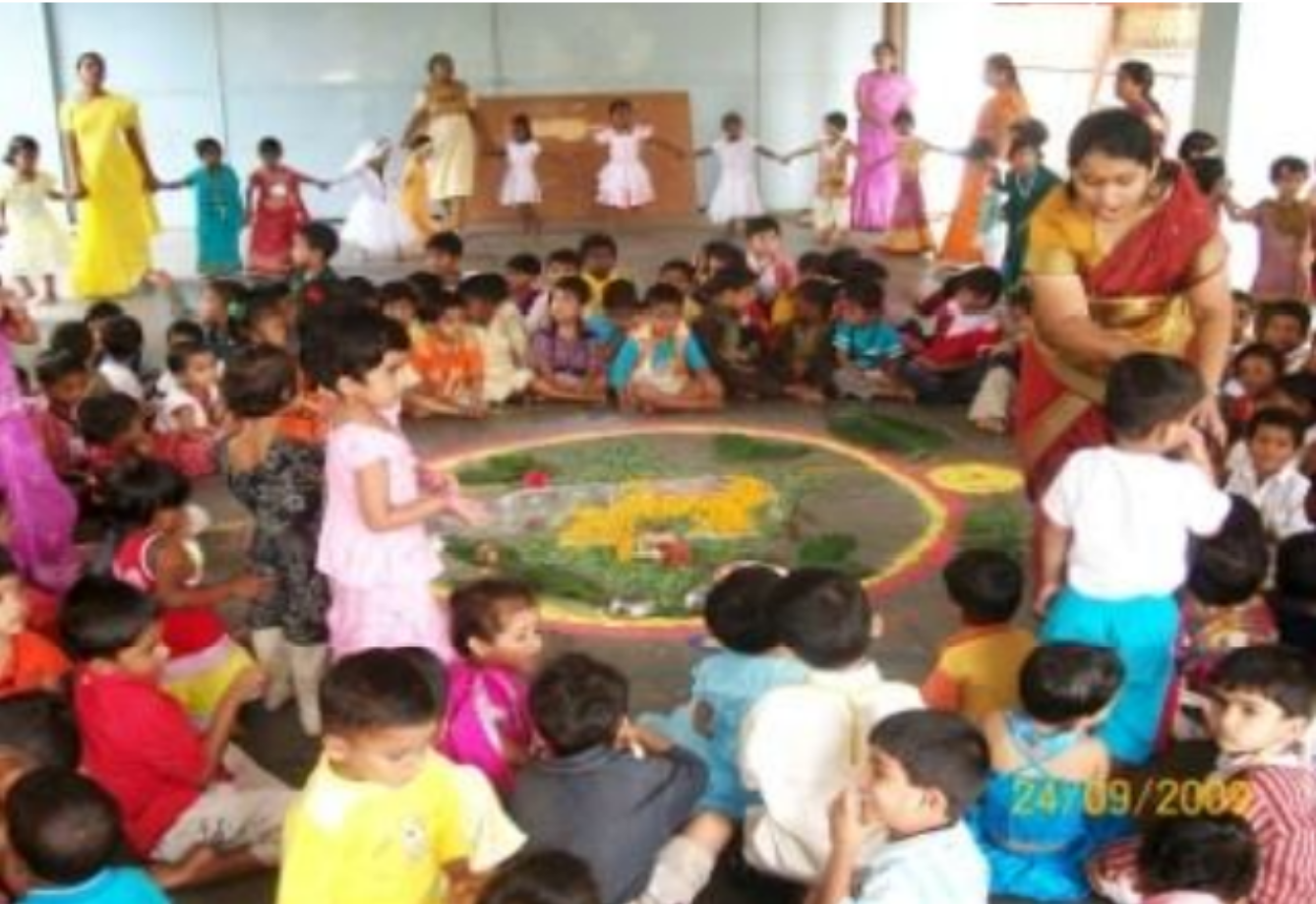Greenery sprouts from every nook and cranny. A glimmering stream of water flows by, complementing the chatter of birds. The fragrance of vibrant blooms wanders the woods. In the distance, roaring engines destroy this beautiful world.
Every day, 200,000 acres of forest are cleared. That is approximately 55,600 trees being cut down each minute! Deforestation is a huge concern today. Elimination of forests and habitats is the most common cause of extinction around the globe. The government appears to be unconcerned about this, but individuals are still combating deforestation!
Jagat Singh Chaudhary Jungli, an ex-BSF soldier from Uttarakhand, has been working tirelessly for over 40 years to fight deforestation. Jagat Singh Ji transformed 1.5 hectares of desolate wasteland into a flourishing agro-forest, ushering in genuine change through hard effort and resourcefulness.
Sir Jagat Singh Chaudhary was born in the village of Garhwal, Uttarpradesh, India, which is renowned for its picturesque landscapes. During his discussion with two Dharma Interns, he narrated a story about his childhood passion for nature. His great grandfather planted a mango tree in the village two centuries ago, at that time, there were no mango trees in that proximity, making this tree special. The tree provided mangoes for the community and demonstrated how one tree can change the world.
Every day, Jagat Singh Ji pays his gratitude to nature and his great grandfather by visiting the mango tree as it has had a major impact on his life and profession.
It wasn’t just this upbringing that influenced his work. His experience in the Border Security Force (BSF) impacted the forest. Jagat Singh Ji joined the BSF at seventeen to serve his motherland. During the 1971 conflict, he was a member of the 52 Battalion BSF. By traveling to neighboring states, he gained experiences that aided him in his project. Jagat Singh Ji claims his service in the BSF, especially during the 1971 conflict, taught him a lot. Discipline, honesty, critical thinking, hard work, patience, perseverance, devotion, and dedication not only helped him grow as a person but also in planting a biodiverse forest. On some occasions, the BSF gave breaks. During a vacation, Jagat Singh Ji returned to Garhwal to rest up and spend time with family and friends. It was during one of these vacations, an incident changed his life.
“Behind every successful man, there stands a woman.” Jagat Singh Ji’s accomplishment was motivated by more than one woman. It all began in 1973 when Jagat Singh Ji went to his hometown of Kot Malla.
A local woman had fallen down the mountain and died while gathering fodder. Women have died or injured themselves multiple times while collecting firewood, water, and other necessities for their families. This incident provoked Jagat Singh Ji to help these women. He thought if he established a forest here, they wouldn’t have to risk their lives harvesting fodder and firewood from dangerous heights. The young soldier spent the remainder of his leave attempting to find ways to ease the drudgery that was part of local women’s daily routines. He claims that if it weren’t for these women, the forest wouldn’t have been established.
Before it housed a lush forest, the land was barren. Jagat Singh Ji inherited this plot from his father and used it to grow plants for food, fodder, and fuel. He started by removing weeds and rocks from the spot. Since there was no water nearby, he would carry water pots on his shoulder for three kilometers daily with his family to irrigate the land. When he returned from BSF, he would work in the woods for 12 to 13 hours each day.
 The landscape has shifted in recent years. Water sources are more advanced than before. Jagat Ji and his son Dev Ji apply modern techniques such as step farming, which reduces soil erosion by lowering the volume and speed of water passing across soil surfaces. Terracing enables widespread cropping than would otherwise be possible. Also, bamboo was employed as an irrigation pipe. He fertilizes the land with traditional approaches, like making organic fertilizer, by digging pits, and put dried leaves into them, which is referred to as the “digging technique.”
The landscape has shifted in recent years. Water sources are more advanced than before. Jagat Ji and his son Dev Ji apply modern techniques such as step farming, which reduces soil erosion by lowering the volume and speed of water passing across soil surfaces. Terracing enables widespread cropping than would otherwise be possible. Also, bamboo was employed as an irrigation pipe. He fertilizes the land with traditional approaches, like making organic fertilizer, by digging pits, and put dried leaves into them, which is referred to as the “digging technique.”
Jagat Singh Ji takes the assistance of animals to accelerate the forest’s growth. He uses earthworms to help with air and water infiltration for the soil. Cow urine, and cow and goat waste are used as fertilizer. Jagat Singh Ji said that he wishes to make the forest as environmentally friendly as possible by using traditional methods. Jagat Singh Ji establishes mixed-forestry with the help and support from his son and community.
During a 1993 government college lecture, Jagat Singh Ji was awarded the title “Jungli” for transforming 1.5 hectares of barren land into a lively forest. He claims he was pleased to be given this name, but his wife was disappointed as it was a term for people who lived in the wild and had no education or manners. She didn’t eat for four days, worrying about her husband’s reputation and children’s futures. As time passed, she learned to accept the name “Jungli.”
Not only does his wife support him. Now Jungli Ji’s son, Dev, has joined his father in promoting the forest. Dev Ji majored in environmental sciences and is now more scientifically assisting his father. But that was not Jagat Singh Ji’s only sole accomplishment.
The “Paryavaran Premi” and “Him Gaurav” awards have been bestowed upon him. He was awarded the prestigious Indira Gandhi Vrikshamitra award in 1998. On the popular quiz show “Kaun Banega Crorepati,” he was even the subject of a question. However, this list of accomplishments continues to grow.
 Jagat Singh Ji not only served his village by developing the forest. He served the world. Trees are essential for survival and provide oxygen, food, and good health. Jagat Singh Ji’s forest isn’t ordinary. It is extremely well planned, using mixed forestry, traditional sciences, and other methods to increase diversity.
Jagat Singh Ji not only served his village by developing the forest. He served the world. Trees are essential for survival and provide oxygen, food, and good health. Jagat Singh Ji’s forest isn’t ordinary. It is extremely well planned, using mixed forestry, traditional sciences, and other methods to increase diversity.
This forest has hundreds of species of vegetation. Manipuri, Kafal, and Oak trees and extinct species such as Deodar, Buras, Stepney, and other 60 species animate the forest. 25 varieties of herbal plants add liveliness. Mixed forestry not only affects the use of land. It also prevents soil problems such as soil erosion over time, keeping the forest healthy for centuries to come. Mixed forestry helps to bring up trees, which provides them with enough sunlight, as the amount of sun a tree need depends on the type.
This enables trees and vegetation to grow freely! Due to healthy trees, animals and birds start making their way to the forest and reverses the extinction within them, which is good news! keep growing and after some time, sustain themselves. The fertile soil makes way for new plants which keeps the land green and rich. Because of the increased soil quality, animals will start making their way to the forest and this could reverse the extinction within them, which is good news during climate change! Mixed forestry also helps with bringing up trees, and provides them with enough sunlight, as the amount of sun that a tree need depends on the type. So, if trees are around other types of vegetation, they no longer need competition and can grow freely. Mixed forestry is great, but not enough for a fast-growing forest.
The Green Ambassador of Uttarakhand is a living icon of selfless service to nature who inspired people of all generations. Saving the globe from deforestation isn’t the only lesson that can be taken from him. Two interns that interviewed him share that Jagat Singh Ji is just like us, but has the enthusiasm and determination to make a difference. Everyone can contribute to his work. According to Jagat Singh Ji, one should plant and care for at least fifteen trees. He has made a significant contribution to making the world a better place and will continue to inspire many more. lt is people’s responsibility to make sure the planet stays green and healthy!
(This article is based on the research and interview conducted by two Indian-American high-schoolers as part of the Dharma Internship Program 2020. The authors acknowledge the valuable suggestions and help from their mentors and program coordinator)
Work Cited
[Best wishes to Harela, the holy and cultural festival of Devbhoomi Uttarakhand]. (2021, July 15). Jagat Singh Chaudhary “Jangli” Facebook Page. https://www.facebook.com/jagatsinghjangli/photos/4514408178590052
Chaudhary Jungli, Jagat Singh. (SOT) Jagat Singh Ji interviewed by Shivani & Shatakashi . 1 Aug. 2021.
[Cultivation of Ringal bamboo]. (2020, July 30). Jagat Singh Chaudhary “Jangli” Biodiverse Forest. https://www.facebook.com/jagatsinghjangli/photos/3488576627839884
Raghvendra, Dev. Role Of Mixed Forest In Restoring Biodiversity [Regulate Climate And Balance Ecosystem].
Raghvendra, Dev. (2019, December 14). [Jagat Singh Chaudhary “Jangli” Bio-Diverse Forest]. Jagat Singh Chaudhary “Jangli” Bio-Diverse Forest. https://www.facebook.com/jagatsinghjangli/photos/2909942389036647
[Jagat Singh Chaudhary “Jangli” giving a speech]. (2019, September 4). Jagat Singh Chaudhary “Jangli” Facebook Page. https://www.facebook.com/jagatsinghjangli/photos/2689009171129971
[Jagat Singh Chaudhary “Jangli” in his bio-diverse forest]. (2020, July 22). https://www.facebook.com/jagatsinghjangli/photos/3410363915661156
[Jagat Singh Chaudhary “Jangli” in his forest]. (2021, May 23). Jagat Singh Chaudhary “Jangli” Facebook Page. https://www.facebook.com/jagatsinghjangli/photos/4361504660547072
[Jagat Singh Chaudhary “Jangli” with a group of females]. (2019, November 26). Jagat Singh Chaudhary “Jangli” Facebook Page. https://www.facebook.com/jagatsinghjangli/photos/2866741040023449
By anonymous, [Jagat Singh Chaudhary “Jangli” with a basket.] (July 4, 2020) Jagat Singh Chaudhary “Jangli” Facebook page. https://www.facebook.com/jagatsinghjangli/photos/3410363915661156
Kotdwar, Bisht Ji. (2018, December 27). Jagat Singh Chaudhary “Jangli” revising the holy land of India, Kotdwar Lok Samhita award. Jagat Singh Chaudhary “Jangli” Facebook Page. https://www.facebook.com/jagatsinghjangli/photos/2258433687520857
Raghvendra, Dev (2021, January 21). [Hindi to English translation] [The greatest worship of God on earth is the protection of nature. . . What a lot of colors nature has shown, ——– Humans have been taught the lesson of harnessing nature. After being imprisoned in the house, I have understood, How much we have made nature cry.]. Dev Raghvendra Badri Facebook Page. https://www.facebook.com/photo/?fbid=3824436034285746&set=pb.100001581627744.-2207520000.
Raghvendra, Dev. (2019, February 24). [Autumn at Jagat Singh Chaudhary “Jangli” Bio-Diverse Forest]. Jagat Singh Chaudhary “Jangli” Facebook Page. https://www.facebook.com/jagatsinghjangli/photos/2352389538125271
[Rhododendron Arboreum tree at Jagat Singh Chaudhary “Jangli” Bio-Diverse Forest]. (2019, May 3). Jagat Singh Chaudhary “Jangli” Bio-Diverse Forest. https://www.facebook.com/jagatsinghjangli/photos/2462195563811334
[The Green patch at Jagat Singh Chaudhary “Jangli” Forest]. (2020, April 22). Jagat Singh Chaudhary “Jangli” Facebook Page. https://www.facebook.com/jagatsinghjangli/photos/3214949865202563
[Wildlife at Jagat Singh Chaudhary “Jangli” Forest]. (2019, December 14). Jagat Singh Chaudhary “Jangli” Facebook Page. https://www.facebook.com/jagatsinghjangli/photos/2909941609036725

Shatakshi
Shatakshi is a 10th grader from Rancho Cardova. She likes to explore new topics and writing!

Shivani Padiyar
Shivani is a 10th grader from El Dorado Hills, California.






